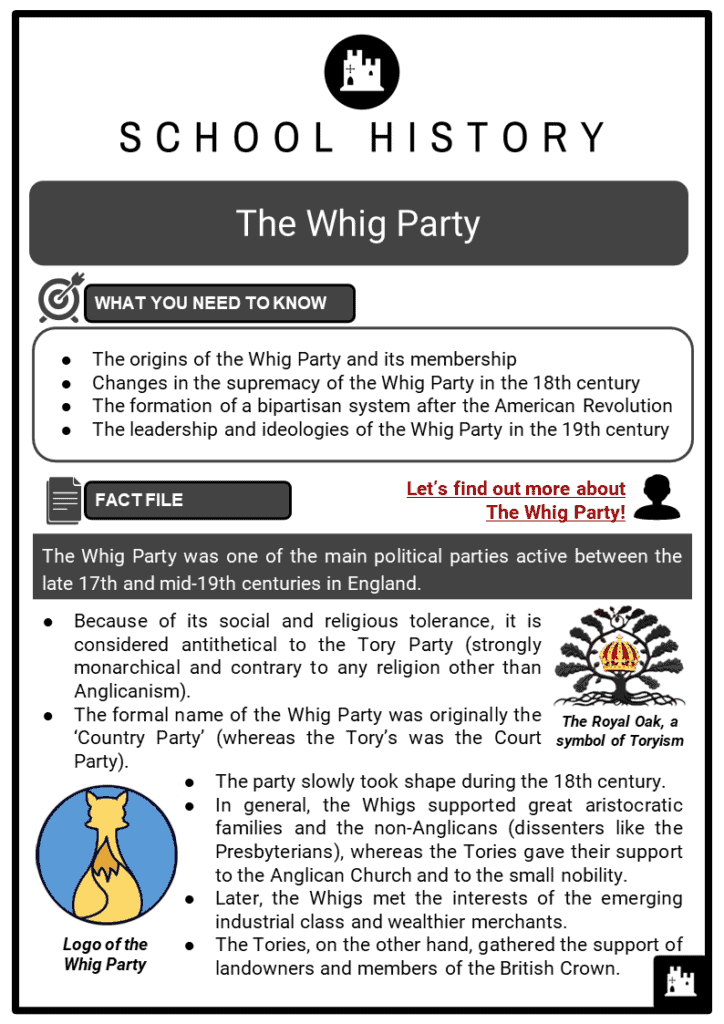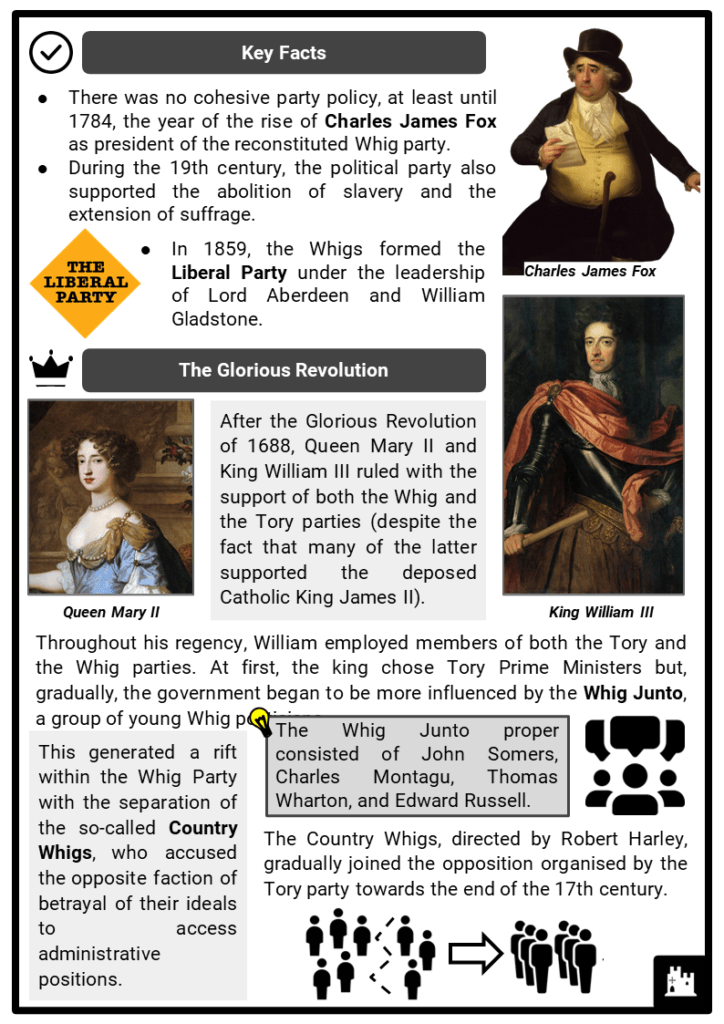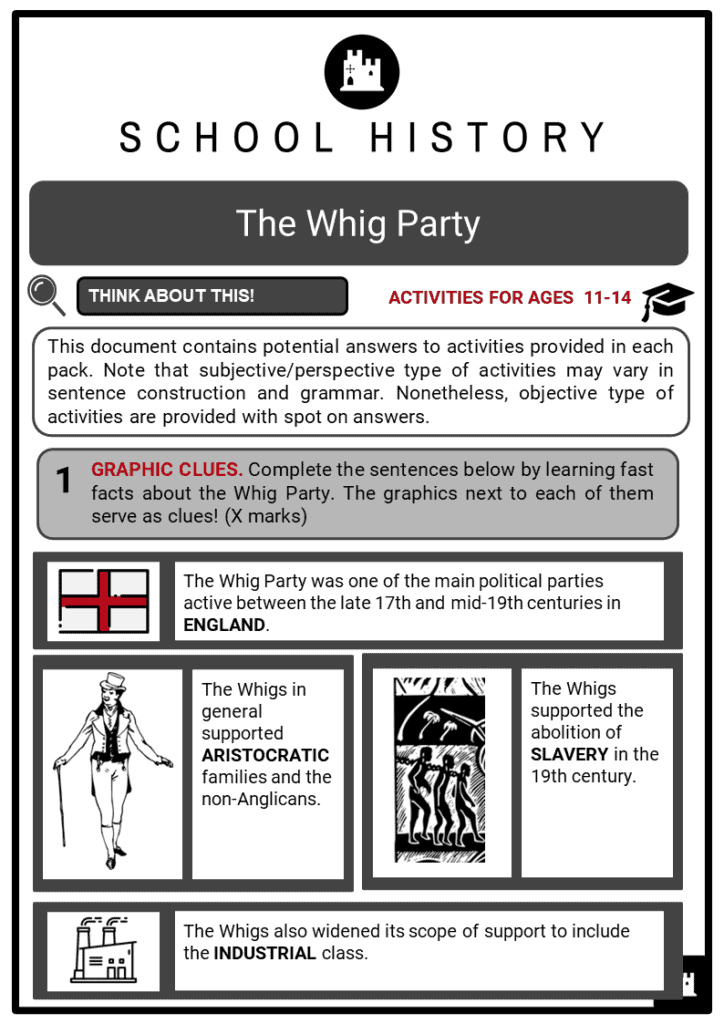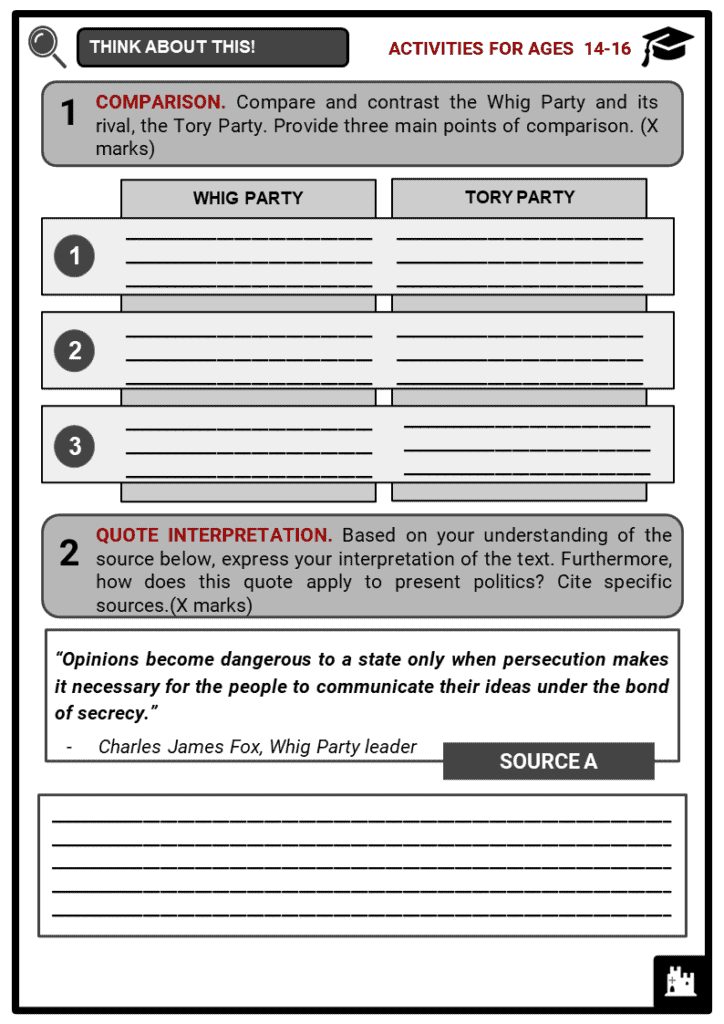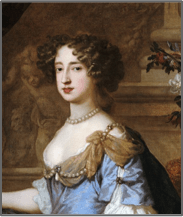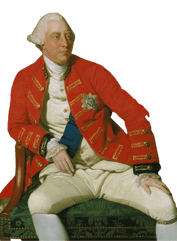Download The Whig Party Worksheets
Do you want to save dozens of hours in time? Get your evenings and weekends back? Be able to teach The Whig Party to your students?
Our worksheet bundle includes a fact file and printable worksheets and student activities. Perfect for both the classroom and homeschooling!
Table of Contents
Add a header to begin generating the table of contents
Summary
- The origins of the Whig Party and its membership
- Changes in the supremacy of the Whig Party in the 18th century
- The formation of a bipartisan system after the American Revolution
- The leadership and ideologies of the Whig Party in the 19th century
Key Facts And Information
Let’s find out more about The Whig Party!
- The Whig Party was one of the main political parties active between the late 17th and mid-19th centuries in England.
- Because of its social and religious tolerance, it is considered antithetical to the Tory Party (strongly monarchical and contrary to any religion other than Anglicanism).
- The formal name of the Whig Party was originally the ‘Country Party’ (whereas the Tory’s was the Court Party).
- The party slowly took shape during the 18th century.
- In general, the Whigs supported great aristocratic families and the non-Anglicans (dissenters like the Presbyterians), whereas the Tories gave their support to the Anglican Church and to the small nobility.
- Later, the Whigs met the interests of the emerging industrial class and wealthier merchants.
- The Tories, on the other hand, gathered the support of landowners and members of the British Crown.
Key Facts
- There was no cohesive party policy, at least until 1784, the year of the rise of Charles James Fox as president of the reconstituted Whig party.
- During the 19th century, the political party also supported the abolition of slavery and the extension of suffrage.
- In 1859, the Whigs formed the Liberal Party under the leadership of Lord Aberdeen and William Gladstone.
The Glorious Revolution
- After the Glorious Revolution of 1688, Queen Mary II and King William III ruled with the support of both the Whig and the Tory parties (despite the fact that many of the latter supported the deposed Catholic King James II).
- Throughout his regency, William employed members of both the Tory and the Whig parties. At first, the king chose Tory Prime Ministers but, gradually, the government began to be more influenced by the Whig Junto, a group of young Whig politicians.
- This generated a rift within the Whig Party with the separation of the so-called Country Whigs, who accused the opposite faction of betrayal of their ideals to access administrative positions.
- The Whig Junto proper consisted of John Somers, Charles Montagu, Thomas Wharton, and Edward Russell.
- The Country Whigs, directed by Robert Harley, gradually joined the opposition organised by the Tory party towards the end of the 17th century.
- In 1702, Anne succeeded William III. The new queen sympathised with the Tories and sought to exclude the Junto Whigs from the administration.
- After a brief and unsuccessful experimental government, the Tory Party continued King William’s policy of using both parties.
- The Tories were guided by the Duke of Marlborough and Lord Godolphin.
- While the Spanish war of succession continued and became less and less important for the Tory Party, Marlborough and Godolphin had to rely more and more on the Junto Whigs until 1708.
- Queen Anne found herself forced to accept this uncomfortable dependence on the Whigs, especially after the deterioration of her relationship with the Duchess of Marlborough.
- Many of the members of the Whig Party that did not belong to the Junto group, headed by the Duke of Somerset and the Duke of Shrewsbury, began to relate more closely to Robert Harley’s Tories.
- In the spring of 1710, Anne dismissed Godolphin and the Junto ministers, replacing them with Tories. The Whigs were opposed to the Treaty of Utrecht, which they tried to block using their majority in the House of Lords, but their manoeuvre was not successful: Anne appointed another twelve men to form a majority that was in favour of the treaty.
The Whig Party’s Supremacy
- With the accession to the throne in 1714 of the elector George Ludwig of Hanover, with the title of King George I, the Whigs returned to power.
- During the long period between 1721 and 1760, the Whigs asserted themselves as the undisputed power, so much so that the majority of both chambers and the title of Prime Minister remained uninterruptedly in the hands of the Whig Party (in particular, it remained in the hands of Robert Walpole and the Pelham brothers, Henry Pelham and his elder brother, the Duke of Newcastle).
George III ascends to the throne
- All this changed during the reign of George III, who hoped to gain more power by freeing himself from the control of the Whigs.
- He decided to promote Lord Bute to the position of Prime Minister, thus ending the Whig’s supremacy and forcing the Duke of Newcastle to resign. After ten years of chaos between the various factions of the Whig party, a new system emerged with two distinct opposition groups. The Whigs of Rockingham, who claimed the title of Old Whig (as successors of the doctrine imparted by the Pelham brothers and the noble Whig families), counted intellectuals such as
- Edmund Burke behind their political thinking.
- The other group was characterised by the Whig supporters of Lord Chatham, who was the great political hero of the Seven Years’ War and was contrary to the development of different factions within the party.
- The Whigs strongly opposed the government of Lord North, who was accused of running a Tory administration, despite being largely composed of people previously associated with the same Whig Party (such as the Pelhamites, members led by the Duke of Bedford, members led by George Grenville, and some of the king’s men).
- Overall, their ideology was considered in line with Tory thought. The idea of a possible relationship between the Lord North and the Tories had far-reaching influence, even in British America. The writings of many British political commentators, known as the Radical Whig, did much to stimulate Republican sentiment in the colonies.
- Radical Whig was based on the writings of was mainly based on the writings of John Locke, John Milton, James Harrington, and Algernon Sydney.
- The first activist settlers considered themselves Whig. However, following Independence, they began to label themselves as Patriots.
- 1833 - The US Whig Party was founded.
The Two-Party System
- After the events of the American Revolution, the government of Lord North fell in March 1782, and a coalition formed by the Rockingham Whigs and the old Chathamites, led by William Petty, took its place.
- With the unexpected death of Rockingham in July 1782, this coalition collapsed: Charles James Fox, Rockingham’s successor as head of the faction, distanced himself from William Petty and withdrew his supporters.
- Petty’s government was short-lived and, in April 1783, Fox returned to power in a coalition with North (his former enemy) as his ally. This alliance seemed unlikely for many politicians at the time. Soon, George III ended the coalition and favoured Chatham’s son, William Pitt the Younger, as Prime Minister.
- This led to the formation of a pure bipartisan system with Pitt and his government on one side, and the Fox-North coalition on the other. Although Pitt has often been called a Tory and Fox a Whig, Pitt always considered himself an independent Whig, generally opposing the development of a partisan political system.
- Supporters of Fox, on the other hand, considered themselves the legitimate heirs of the Whig tradition, strongly opposing Pitt’s first years of government, which became more and more prominent between 1788 and 1789 when the king was diagnosed with mental health problems. Fox and his family then gave full support to their ally, the Prince of Wales and future King George IV.
- The opposition split during the French Revolution and although Fox and some younger Whigs, such as Charles Gray and Richard Brinsley Sheridan, were close to the positions of French revolutionaries, others (led by Edmund Burke) strongly opposed this position.
- While Burke himself defected to Pitt in 1791, much of the remaining party (including the most influential leaders in the House of Lords, such as the Duke of Portland, Rockingham’s nephew
Lord Fitzwilliam... - ...and William Windham) found themselves increasingly uncomfortable with the support that Fox and his allies were giving to the French Revolution.
- 1793 - They split at the beginning of 1793 when Fox asked the party to support France at war. By the end of that year, the Whig party ended its relations with Fox.
- 1794 - By the summer of 1794, much of the opposition joined the Pitt government.
- 1806 - Many of the Whigs who had joined the Pitt faction later retracted and supported Fox as the leader of the new Ministry of All the Talents, formed after Pitt’s death in 1806.
- After this date, the divisions began to manifest themselves clearly: the supporters of Pitt, led until 1809 by Fox’s old comrade – the Duke of Portland, labelled themselves Tory; whereas Fox’s supporters, led by Lord Gray after Fox’s death in 1806, proudly called themselves Whig.
- 1807 - After the fall of the Ministry of All the Talents in 1807, the Whigs remained in opposition for twenty-five years. The accession to the throne of the old ally of Fox, the Prince of Wales, did not change the situation and the prince effectively cut off all relations with Whig comrades.
- 1830 - Only when George IV died in 1830 did the Whig return to rule. The government of Lord Gray passed very important reforms, such as the Reform Act of 1832 and the abolition of slavery.
- It should be noted, however, that both the Whigs and the Tories of this period remained remarkably conservative, generally opposing any possible reform in the British governmental system.
- Around this time, the Whig historian Thomas Babington Macaulay began promulgating what would later be called the Whig perspective of history. This perspective led to serious distortions in future portraits of 17th and 18th century history.
Image sources:

